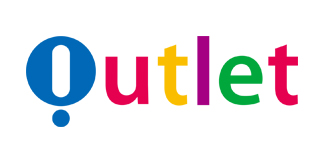

Shixun pioneer pays close attention to global trends, supports local original design, and provides complete trend information and consulting services and rise platform for fashion lovers and fashion practitioners.
Bain & Company released a new report "global luxury industry development and Outlook", which shows that the global luxury market is growing rapidly in 2018, and Chinese consumers are leading the trend.
1. Luxury market continues to shine
The luxury industry Bain tracks includes luxury goods and experience, which is composed of nine branches, dominated by luxury cars, luxury hotels and personal luxury goods, accounting for more than 80% of the market.
Overall, the luxury market grew by 5% in 2018, reaching 1.2 trillion Euro worldwide, and most of the molecular markets performed well.
Luxury car sales continued to dominate the market, with sales up 5% to 495 billion euros. Luxury goods remain very attractive to consumers, as illustrated by sales growth in luxury hotels (+ 5% vs. last year), gourmet and fine dining (+ 6%) and luxury cruise (+ 7%).
2. Healthy growth of personal luxury
Personal luxury market reached a record 260 billion euro, up 6%. The personal luxury market has experienced growth in most parts of the world, mainly due to stronger local consumption (+ 4%). In contrast, the number of tourists buying was flat.
Overall, footwear and jewelry were the top luxury items with the largest growth, 7% respectively, followed by handbags and beauty. Clothing sales were flat, mainly due to poor sales in the men's wear department.
3. Chinese consumers' demand for luxury goods is still incomparable
Chinese consumers lead the global growth trend. Their share of global luxury spending continues to rise, now accounting for 33% of the total, and 32% in 2017, and the share of Chinese mainland has increased from 8% in 2017 to 9%. On Chinese mainland, sales of luxury goods increased by 20% to 23 billion euros due to demand growth.
Between 2015 and 2018, Chinese consumers' local consumption contributed twice as much to growth as their consumption abroad.
European sales increased 3% to 84 billion euros. Luxury sales in the Americas reached 80 billion euros, up 5%.
In Japan, luxury sales rose 6% to 22 billion euros. Sales in the rest of Asia rose 9% to 39 billion euros. Luxury sales in the rest of the world grew flat at 12 billion euros, mainly due to stagnation in the Middle East.
4. More and more luxury consumers are shopping online
Retail channels grew by 4% in 2018, of which 3 / 4 came from physical store sales growth; wholesale channels grew by only 1%.
Online luxury shopping continues to accelerate in 2018, growing 22% to nearly 27 billion euros and now accounts for 10% of all luxury sales. The Americas account for 44% of online sales, but Asia is becoming a new engine for luxury online growth, slightly higher than in Europe.
5. Luxury consumers are getting younger and younger
Luxury brands can no longer deny the influence of young consumers. In 2018, generations y and Z accounted for 47% of luxury consumers and 33% of luxury sales. But they are the biggest driver of the overall market growth.
Luxury brands are adapting to the preferences of young consumers in terms of products, communication and participation, and distribution channels.
6. Seven trends will drive the growth of luxury industry
The purchasing power of Chinese consumers has increased.
The Internet affects every luxury deal.
Network integration redefines the future of luxury stores.
Young consumers have increased their influence.
Culture and subculture promote consumption trend.
individualization.
Edge is becoming more and more mainstream.
